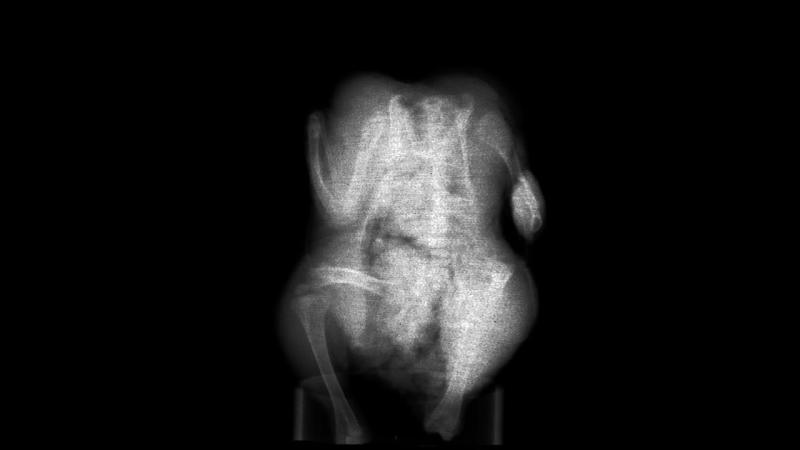Phosphor screen scanners have become a pivotal technology in medical imaging and related fields, revolutionizing digital radiography by enhancing image quality and diagnostic accuracy. These devices convert latent images captured on phosphor plates into high-resolution digital data, facilitating easier storage, retrieval, and analysis. Unlike traditional X-ray film that requires chemical processing, phosphor screen scanners use photostimulable phosphor plates to capture and subsequently convert energy into digital images, thus speeding up medical workflows and improving patient outcomes. This article delves deeply into the technological advancements, market trends, and commercial potential of phosphor screen scanners under several critical facets.
Technological Foundations and Innovations Driving Phosphor Screen Scanners
Phosphor Screen Scanner operate by scanning phosphor plates that have absorbed X-ray energy; this energy is released as light when stimulated by a laser beam inside the scanner. The light photons emitted are then converted into electrical signals, creating a high-resolution digital image. Recent innovations include advances in laser scanning technology, enhanced photomultiplier tubes, and improved software algorithms that reduce noise and enhance image clarity. These innovations have led to higher sensitivity, better spatial resolution, and faster processing times.
The introduction of portable and multifunctional scanners has further expanded usability in scenarios such as emergency care or field diagnostics. Furthermore, improvements in phosphor plate materials have resulted in increased durability and better image retention, enabling more repeated use without significant quality degradation. These technological strides not only improve the diagnostic value of the images but also contribute to cost-efficiency and sustainability in medical imaging facilities.
Navigating Market Research Insights Relevant to Phosphor Screen Scanners
For stakeholders aiming to identify growth opportunities, emerging trends, and competitive landscapes related to phosphor screen scanners, detailed market reports featuring segmented data on product types, application areas, and geographical regions are indispensable. Such reports often categorize information based on scanner models (e.g., tabletop versus portable units), usage contexts including dental, veterinary, and general radiology, and end-user industries like hospitals, diagnostic centers, and research institutions.
Comprehensive market research insights provide clarity on growth drivers such as increasing demand for digital radiography, government initiatives promoting healthcare digitization, and rising prevalence of chronic diseases necessitating frequent imaging. Additionally, analyzing regulatory frameworks, reimbursement policies, and technological adoption rates across various regions helps enterprises strategize their market entry and expansion plans effectively. Reliable market intelligence also highlights key manufacturers, partnership trends, and emerging innovation clusters that could reshape the competitive landscape.
Commercial Use Cases and Transactional Dynamics in Phosphor Screen Scanner Adoption
The commercial viability of phosphor screen scanners is significantly influenced by their wide-ranging applications across healthcare and industrial sectors. In clinical environments, these scanners have replaced conventional film-based radiography in diagnosing bone fractures, dental cavities, chest infections, and more. The ability to deliver quick and accurate images promotes faster diagnosis and timely treatment, which translates into better patient care and operational efficiency.
Transactionally, procurement decisions in healthcare settings usually involve evaluating factors such as scanner resolution, compatibility with existing Picture Archiving and Communication Systems (PACS), maintenance costs, and vendor support services. Bulk purchases and leasing options are common practice in large hospitals and diagnostic chains, reflecting budget considerations and technological upgrade cycles. Moreover, the growing trend of integrating artificial intelligence and machine learning with phosphor screen scanners is opening new commercial avenues, including automated image analysis and personalized diagnostic solutions.
Industrial applications, although comparatively niche, include non-destructive testing and quality control tasks where precise imaging is required to detect internal faults in manufactured products. This aspect broadens the transactional market scope, encouraging vendors to cater to diversified clients beyond conventional medical user groups.
Navigating Technological Challenges and Future Outlook for Phosphor Screen Scanners
While phosphor screen scanners have advanced significantly, certain technical and operational challenges persist. Issues like plate wear and tear, dependence on laser alignment precision, and limitations in capturing ultra-high resolution images can affect long-term usage efficiency. Additionally, the need for regular calibration and potential compatibility challenges with evolving healthcare IT infrastructure necessitate ongoing maintenance and technical support.
Looking ahead, the integration of cloud-based storage systems and enhanced connectivity options is expected to transform how scanned images are managed and accessed globally. Emerging trends also show a growing emphasis on eco-friendly manufacturing processes and recyclable materials in scanner construction, aligning with broader sustainability goals.
Furthermore, ongoing research focuses on enhancing phosphor material properties to improve sensitivity and reduce scanning times. Incorporating augmented reality and virtual reality interfaces for image review and manipulation may also redefine user interaction paradigms in the near future.
Get this Report in Japanese Language: リン光スクリーンスキャナ
Get this Report in Korean Language: 인광체 스크린 스캐너
Read More Articles Related to this Industry
Key Development in Gas Chromatography
About Author:
Money Singh is a seasoned content writer with over four years of experience in the market research sector. Her expertise spans various industries, including food and beverages, biotechnology, chemical and materials, defense and aerospace, consumer goods, etc. (https://www.linkedin.com/in/money-singh-590844163)
